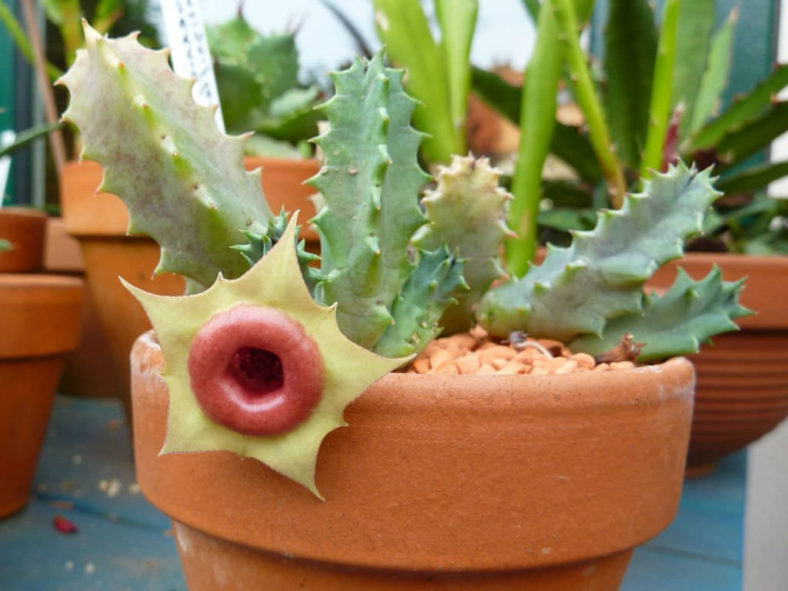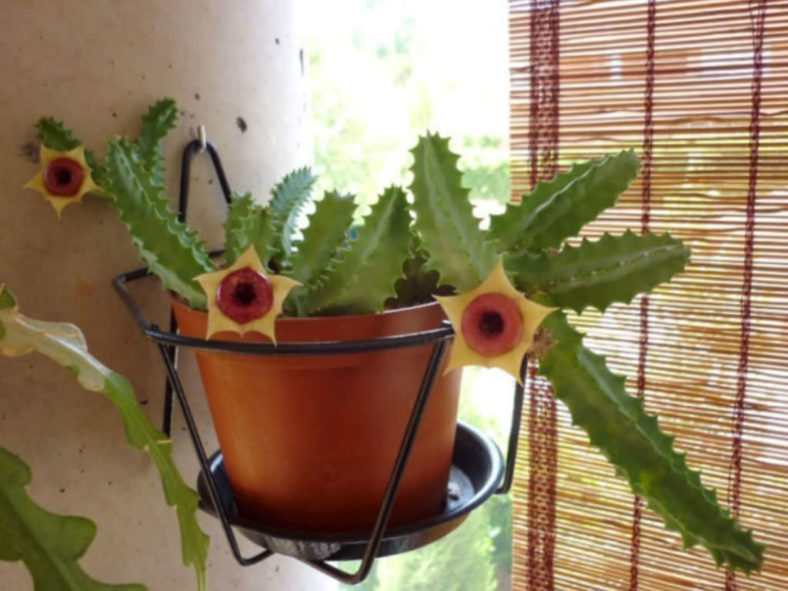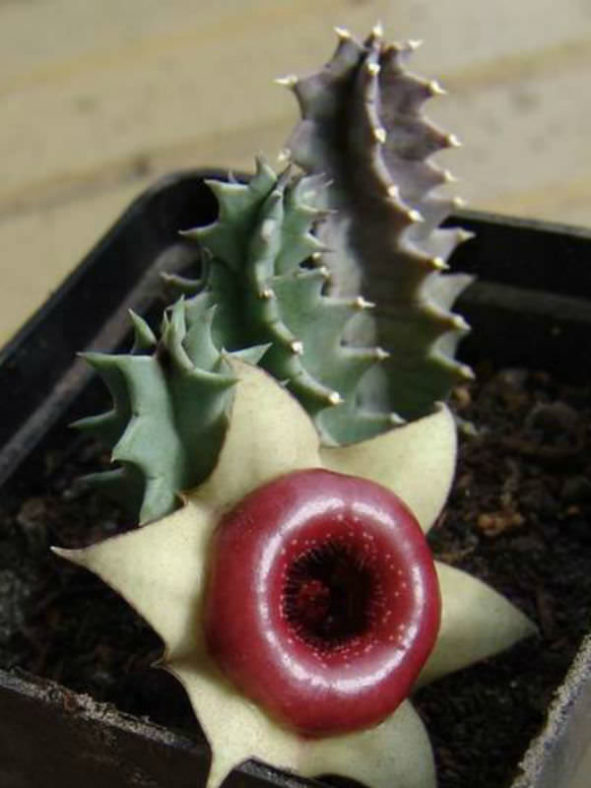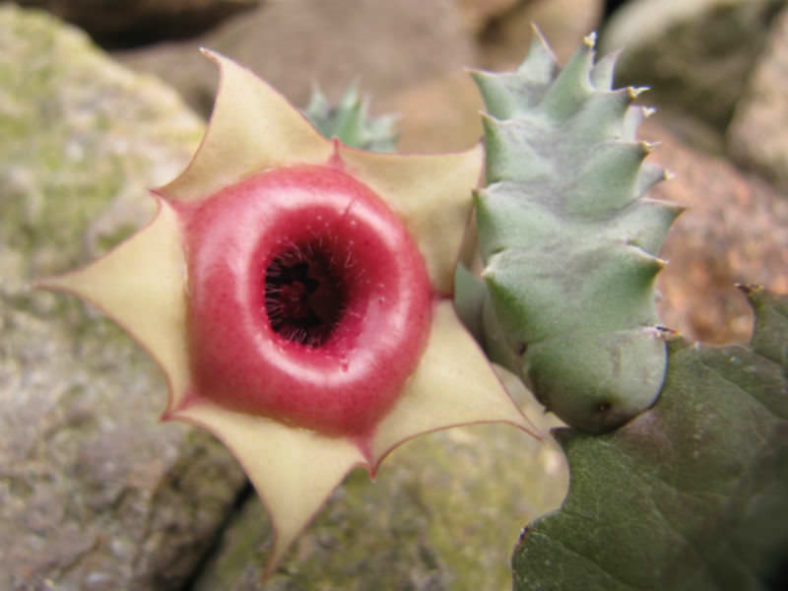Scientific Name
Huernia zebrina subsp. insigniflora (C.A.Maass) Bruyns
Synonym(s)
Huernia confusa, Huernia insigniflora, Ceropegia zebrina subsp. insigniflora
Scientific Classification
Family: Apocynaceae
Subfamily: Asclepiadoideae
Tribe: Stapeliae
Genus: Huernia
Etymology
The specific epithet "insigniflora" (pronounced "in-sig-NIF-flor-uh") means "having distinguished, remarkable, or conspicuous flowers" and refers to the distinctive appearance of the flowers of this subspecies.
Origin
Huernia zebrina subsp. insigniflora is native to South Africa (Limpopo, Mpumalanga, and Wolkberg).
Description
Huernia zebrina subsp. insigniflora is a small succulent that forms a clump of erect, 4-angled, dull grey-green stems with protruding teeth. The stems can grow up to 4 inches (10 cm) tall and 0.8 inches (2 cm) wide.
The flowers appear in later summer and fall, solitary from the base of young stems on pedicels that can measure up to 0.5 inches (1.3 cm) in length. They have an unpleasant smell to attract pollinating flies. The pale rose or ivory, 5-pointed corolla lobes are triangular with long, narrow, attenuating tips. They spread star-like around the bright red, deep purple, or liver-colored annulus around the flower tube.

Hardiness
USDA hardiness zones 10b to 11b: from 35°F (1.7°C) to 50°F (10°C).
How to Grow and Care
Huernias require a potting mix with excellent drainage. A succulent plant mix of 50 percent pumice or perlite, 25 percent peat or organic mulch, and 25 percent sand helps prevent rotting and overwatering. Roots experience dieback in cool-season dormancy, so plants grow best in shallow containers that allow the soil to dry out quickly. Using clay pots further helps prevent the soil from staying too wet. An underlayment of coarse gravel below the soil mix also improves drainage. A layer of gravel between the plant and the soil mix in climates with damp, cool summers also helps prevent the stems from staying too moist.
Outdoor plantings do well in raised beds. Huernias prefer bright light or partial shade. In nature, they grow underneath shrubs or other plants. Too much sun causes stems to develop protective reddish or purple pigmentation and can scald the stems. Too little light leads to weak, thin growth with decreased flower production. These plants grow best between 50°F and 80°F (10°C and 27°C). Protect them from freezing weather.
See more at How to Grow and Care for Huernia.
Links
- Back to genus Huernia
- Succupedia: Browse succulents by Scientific Name, Common Name, Genus, Family, USDA Hardiness Zone, Origin, or cacti by Genus
Photo Gallery
Click on a photo to see a larger version.


